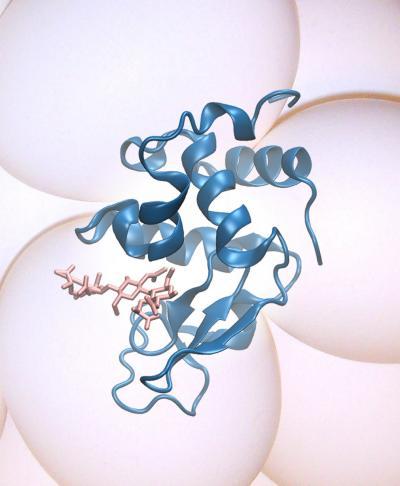OAK RIDGE, Tenn., Sept. 30, 2011 -- Molecular motion in proteins comes in three distinct classes, according to a collaboration by researchers at the Department of Energy's Oak Ridge National Laboratory and the University of Tennessee, in research reported in Physical Review Letters.
The research team, directed by ORNL-UT Governor's Chairs Jeremy Smith and Alexei Sokolov, combined high-performance computer simulation with neutron scattering experiments to understand atomic-level motions that underpin the operations of proteins.
"The analysis and interpretation of neutron scattering spectra are always difficult for complex molecules such as proteins," said Smith, who directs ORNL's Center for Molecular Biophysics. "We've performed experiments and then shown that simulation can provide a clear view of them. It allows us to see through the complexity and find out what motions are going on."
Defining the motions present -- localized diffusion, methyl group rotations and jumps -- is important as it allows scientists to think about how the motions determine the functions of proteins that are critical to all life.

Lysozyme (shown in blue) -- a natural enzyme found in tears, saliva and egg whites -- can break down bacterial cell walls (shown in pink). ORNL researchers have combined computational simulation and neutron experiments to clarify the complicated motions of proteins such as lysozyme into three distinct classes.
(Photo Credit: ORNL)
"First, we found that experiment and simulation agreed perfectly with each other, which is remarkable," Smith said. "Second, the simulations told us that this type of neutron scattering can be interpreted in a very simple way."
Although the team performed its research on a particular protein called lysozyme, a natural antibacterial enzyme found in tears, saliva and egg whites, the researchers anticipate the technique will have a much broader impact in the neutron scattering community, aiding research in areas such as biofuel design or environmental remediation.
The combined simulation and neutron scattering approach should also be of use in the characterization of non-biological materials such as polymers. Smith notes that approximately half the neutron scattering experiments at ORNL's Spallation Neutron Source involve the study of motions in materials.
"These methods are of general applicability," Smith said. "Many experimentalists can now come to the ORNL's Spallation Neutron Source, measure a spectrum of whatever sample they have, and then apply this analysis in terms of three classes of motion to interpret their results."